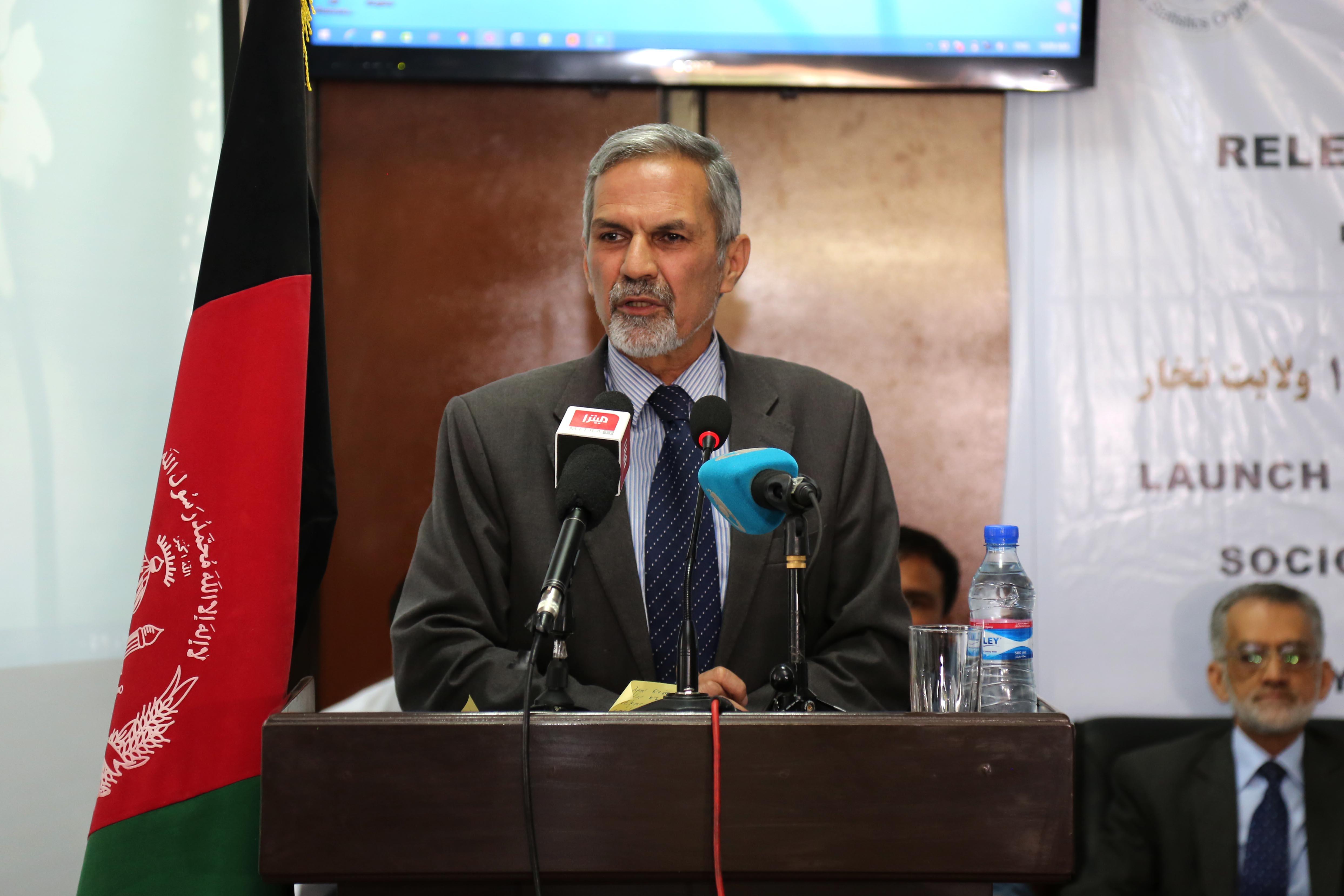Kabul - May 10, 2016 – Central Statistics Organization (CSO) of Afghanistan launched the highlights of the results of Takhar Socio-Demographic and Economic Survey (SDES) at the CSO office.
Takhar is the eighth province where the Socio-Demographic and Economic Survey (SDES) was conducted in 2015 with the technical support of the United Nations Population Fund (UNFPA) and financial support from development partners.
The SDES is designed as a long term project to gather information on socio-economic and demographic status of population on staggered provincial approach. SDES is the largest survey ever conducted in Afghanistan that provides data and statistics for local development policy and planning.
Key Goals of SDES survey:
· Collect data and figures to be used for evidence-based decision making, policy design, planning and management;
· Collect statistics to be used by industries and businesses;
· Provide data for the development of housing policies and programs;
· Collect data on vulnerable populations;
· Collect data for the delivery of humanitarian assistance;
· For research purposes.
SDES covers all households in each village and urban area, where for every household the survey records the total number of household members by sex, and for the remaining every other household, the survey collects detailed socio-demographic and economic data about each of the household members.
Major indicators for which the data is collected are:
· Age, sex, migration, education, literacy, functional difficulties, level of employment, birth, mortality, birth registration, civil statues of parents, household profile and housing (the same indicators are used in census).
· One of the important dimensions of the survey which distinguishes it from other surveys is that the SDES data is generated at the district level and in some cases groups of villages.
Key findings of SDES in Takhar province are:
· 50.7 percent of the total population of Takhar are males and 49.3 percent are females.
· Sex ratio is 103 males per 100 females.
· Age group 0-4 years constitutes the largest proportion (17 percent) of Takhar’s total population.
· Youth population (15-24 age group) accounts for 20.2 percent of Takhar’s total population.
· Literacy rate among 15 years old and above is 28.1 percent which is below the national rate of 34.3 percent.
· Literacy rate among the youth population (15-24 years) is 46.6 percent while it is 33.3 percent among the population aged 10 years and above.
· The net attendance rate for higher education in Takhar is 8.4 percent.
· The net attendance rate in high school in Takhar is 18.2 percent.
· The birth registration rate in Takhar is 32.8
· In Takhar, 1.5 percent of the population aged 5 years old and above had at least one type of functional difficulty (seeing, hearing, walking, remembering, communicating or self-caring).
· Economically active population 15 years and older in Takhar reaches 41.0 percent. This includes individuals who have worked for 6 months or more during the past 12 months prior to the survey.
· 56.7 percent of the population 15 years and older did not work during the past 12 months before the survey.
· Majority of the population 15 years and older in Takhar were reported to be engaged in doing household chores (76.5 percent) and studying (16.9 percent).
· 90.2 percent of the ever married women aged 15 years and above had given birth to at least one child.
· About 12,000 deaths occurred during the two years before the date of survey. More male infant deaths (60.3 percent) compared to female infant deaths (39.7 percent).
· Children below the age of 1 accounted for 25.2 percent of the total deaths.
· Children below the age of 5 constituted 39.3 percent of the total deaths.
· Average household size in Takhar province is 6.7 persons.
· 25.5 percent of the households in Takhar had access to improved sanitation facility.
· 47.9 percent of the households in Takhar had access to improved drinking water sources.
· 91.8 percent of the households in Takhar were reported to be owners of their housing units.
CSO acknowledges the residents of Takhar province for their contribution to the implementation of this survey. It is hoped that the findings of this survey are used by planners and policy makers for the purpose of improving people’s living conditions in the province.
--end--
For more information contact: CSO Communication Department 020 210 40 95 / 020 210 40 93 / 020 210 43 38


